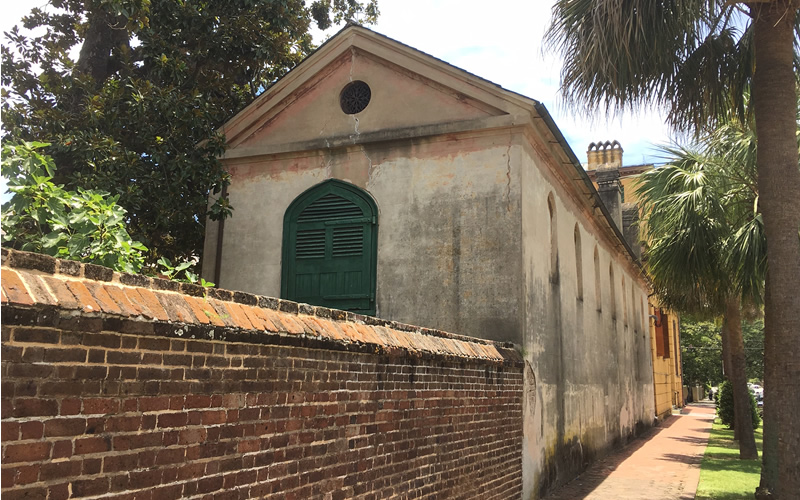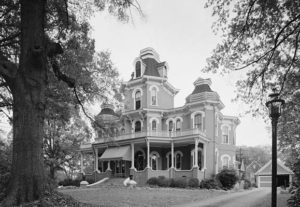
Here’s a different view of a site you may have seen when visiting Charleston. You may not have seen it from this angle. This week for the gold, where and what is it? Send your guess about the location of this photo to feedback@statehousereport.com. And don’t forget to include your name and the town in which you live.
Our previous Mystery Photo
 Our June 28 mystery, “Grand house” showed the beautiful Lanneau-Norwood House, located at 417 Belmont Avenue in Greenville. Built in 1877, it is a 2 1/2-story, brick Second Empire-style mansion with a Mansard roof.
Our June 28 mystery, “Grand house” showed the beautiful Lanneau-Norwood House, located at 417 Belmont Avenue in Greenville. Built in 1877, it is a 2 1/2-story, brick Second Empire-style mansion with a Mansard roof.
Congratulations to several readers who correctly identified the mansion: George Graf of Palmyra, Va.; Jay Altman of Columbia; Bill Segars of Hartsville; Dale Rhodes of Richmond, Va.; Ashley Aldebol of Greenville; and Frank Bouknight of Summerville.
Graf gave context pulled from Wikipedia: “The Lanneau-Norwood House (“Alta Vista”) is a historic house, built c. 1877 by Jacob W. Cagle (1832–1910) for capitalist Charles Henry Lanneau II (1834-1913). Lanneau, was a veteran of Hampton’s Legion which was an American Civil War military unit of the Confederate States of America, organized and partially financed by wealthy South Carolina planter Wade Hampton III. Hampton’s Legion initially boasted a large number of South Carolina’s leading citizens, including future generals J. Johnston Pettigrew, Stephen Dill Lee, Martin W. Gary, and Matthew C. Butler. The Wade Hampton statue currently resides on the South Carolina Statehouse lawn.”
Bouknight added, “After the Civil War, Lanneau, a veteran of Hampton’s Legion, first worked as a bookkeeper for Camperdown Mill and then in 1882 organized Huguenot Mill, one of the first steam-powered textile mills in Upstate South Carolina. Perhaps with money inherited by his first wife, Lanneau was able to build a fashionable and unusually grand residence for contemporary Greenville. After a major fire in 1883, Lanneau rebuilt the house, which burned again in the 1890s.
“Bankrupt by 1907, Lanneau sold the house to banker and textile financier John Wilkins Norwood, a relative by marriage. Norwood added plumbing, electricity, and a coal furnace and furnished it with drapes, tapestries, and furniture suggested by decorators from Wanamaker’s in New York. At Norwood’s death in 1945, the house passed to his son-in-law and daughter, Claud Sapp and Frances Norwood Funderburk, and then to their son and daughter-in-law George Norwood and Ann Downen Funderburk, who took special interest in the gardens.”
- Send us a mystery: If you have a photo that you believe will stump readers, send it along (but make sure to tell us what it is because it may stump us too!) Send to: feedback@statehousereport.com and mark it as a photo submission. Thanks.


